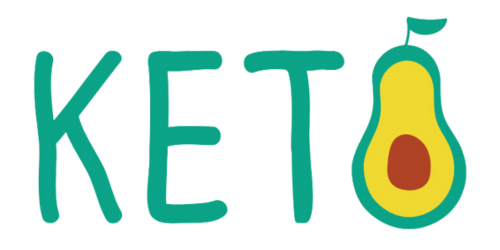The Mayo Clinic Diet is a healthy eating plan promoting a sustainable weight reduction and maintenance approach.
Origin of Mayo Clinic Diet
The Mayo Clinic is one of the best hospitals in the United States, and its staff includes specialists in weight control who created the Mayo Clinic Diet. It follows the guidelines in the 1949 original and 2017 Mayo Clinic Diet book revision.
How Does the Mayo Clinic Diet Work?
The Mayo Clinic Diet is an all-inclusive, technology-based plan designed to reduce weight. It’s adaptable, letting subscribers choose their diet from many alternatives, including the Mediterranean, healthy keto, vegetarian, increased protein, and the traditional Mayo Clinic plan.
The nutritional value of each dish, as well as its preparation and preparation instructions, are included in each meal plan. Recipes like quick roasted tomato and feta bruschetta for breakfast, Italian chicken bread salad for lunch, fish stew with green beans, cherry tomatoes, blueberry, and almond yogurt for dinner, and fresh vegetables and fruit for a snack may all be found in a sample menu for the Mediterranean diet.
The Mayo Clinic’s weight reduction program is divided into two parts: the first is dedicated to dropping excess pounds, and the second is designed to keep the weight off for good. During the “Lose It!” phase, participants work to incorporate five new healthy behaviors and eliminate five old bad ones over two weeks. Participants in this period may see a weight loss of 6-10 pounds.
When moving into Stage 2, “Live It!”, the target weight reduction ranges from 1-2 pounds each week. Phase two is meant to be a permanent lifestyle change, so it expands on the knowledge gained in the first phase about what foods to eat, how much to eat, how to plan meals, how to be more active, and how to stick to healthy habits like eating more vegetables and less sugar and more protein and less fat.
Does the Mayo Clinic Diet Help You Lose Weight and Feel Better Overall?
According to Natalie B. Allen, RD, a clinical teacher of biomedical sciences at Missouri State University in Springfield, the only studies on the Mayo Clinic Diet have been undertaken by the Mayo Clinic itself. She notes that the findings of the associated studies may be skewed since there is no independent investigator for the plan.
Research published in September 2014 in the Journal of the American Medical Association that looked at numerous popular diets found that cutting down on fat and carbohydrates was helpful for weight reduction. Weight reduction success may be achieved by following any diet that a person is committed to and can maintain over the long run, as was observed in the review.
Alex claims that the basic principles of the Mayo Clinic Diet imply it is simple to follow, which may provide desirable outcomes. According to Alex, “they’re emphasizing the essentials,” and it’s a strategy that works.
Mayo Clinic lifestyle adjustments are supported by National Weight Control Registry (NWCR) data. Members of NWCR who have lost weight and kept it off report adopting a diet that’s low-calorie and low-fat, and combining it with increased activity.
The strategy provides for essential nutritional requirements, which is a plus, according to Lockwood. We know Americans don’t eat enough fruits and vegetables, but this diet does a great job of incorporating more fresh produce into daily meals, she adds. The participants are urged to increase their intake of fruits and vegetables, which has been linked to several health advantages beyond simple weight reduction. Harvard points out that there is evidence linking a diet rich in fruits and vegetables to a reduced risk of cardiovascular disease, high blood pressure, some cancers, diabetes type 2, digestive health, and age-related eye disorders.
Permitted and Prohibited Foods
The diet provides a wide range of options within six categories of food:
- -Vegetables
- -Whole grains
- -Fruits
- -Sweets, in small amounts
- -Unsaturated fats such as olive oil and nuts
- -Lean proteins such as beans and fish
Favorite meals like pizza are OK, but only if you don’t eat the entire pie and don’t eat it every day.
During the Lose, It! phase, drinking is not allowed. Afterward, you may drink moderately (on average, 75 calories’ worth of alcohol each day).
Mayo Clinic Diet is ranked
#5 in Best Diets Overall
#17 in Best Fast Weight-Loss Diets
#5 in Best Weight-Loss Diets
#10 in Best Heart-Healthy Diets
#4 in Best Diabetes Diets
#1 in Best Diet Programs
#9 in Best Diets for Healthy Eating
#9 in Easiest Diets to Follow
What’s Good About the Mayo Clinic Diet?
The Mayo Clinic Diet has been developed with the help of specialists in the field of weight management, increasing the likelihood that it will be both safe and beneficial for its users. Complete plan adherence is necessary for best outcomes and may call for hard work, a shift of perspective, and a positive attitude. I’ll list some of the diet’s benefits below.
Provides meals high in nutrients
The New Mayo Clinic Diet recommends basing your diet on healthy, high-energy foods, and its food pyramid represents good nutrition standards and guidelines for doing so. Restricting sugary and highly processed meals is beneficial for healthy eating regardless of your weight loss goals.
Include a physical activity component
To reap the program’s full benefits, participants are encouraged to commit to at least 30 minutes of physical exercise daily. Exercise and general health are emphasized as the foundational pillars of the tiered approach to weight control. It shows you how to make new routines and set new objectives.
Facilitates Long-Term Achievement
The New Mayo Clinic Diet is not meant to be a temporary solution but rather a permanent transformation of your lifestyle with healthy new behaviors. As a result, you don’t have to engage in fruitless cycles of dieting and bingeing to get to a healthy weight.
Downsides of the New Mayo Clinic Diet
There is no certainty that this plan will meet your dietary and lifestyle requirements, as is the case with most diets.
Initial stifling effect possible
During the Lose It stage, you won’t be allowed to consume refined carbohydrates, alcoholic beverages, or fast food. Even while the New Mayo Clinic Diet doesn’t come with any widespread health concerns, its rigorous weight reduction phase may make it hard for specific individuals to get the nutrients they need.
The process itself may take some time
To get the health benefits of a diet rich in fruits and vegetables while avoiding the adverse effects of refined and processed foods requires dedication and patience. You’ll start using new strategies regarding food procurement, menu formulation, and preparation.
Requires a low-calorie intake
However, if you lead a very active lifestyle or are taller than average, you may need more than the suggested 1,200-1,400 calories (if you weigh 250 pounds or fewer). It’s essential to provide your body with nourishment for workouts and everyday activities. Otherwise, you run the risk of the diet being unsuccessful in the long run for weight management.
Conclusion
Fruits, vegetables, whole grains, and healthy fats are the cornerstones of the Mayo Clinic Diet. The meal plan works best when supplemented by frequent exercise and home-cooked meals.
There is no conclusive research on whether or not the diet helps with weight reduction, although there is some evidence that it does.
The meal plan does not insist on calorie counting but instead gives suggestions for serving sizes depending on the number of calories you should consume daily.
The Mayo Clinic Diet is a healthy alternative for those searching for a diet they can stick to for the rest of their lives.

